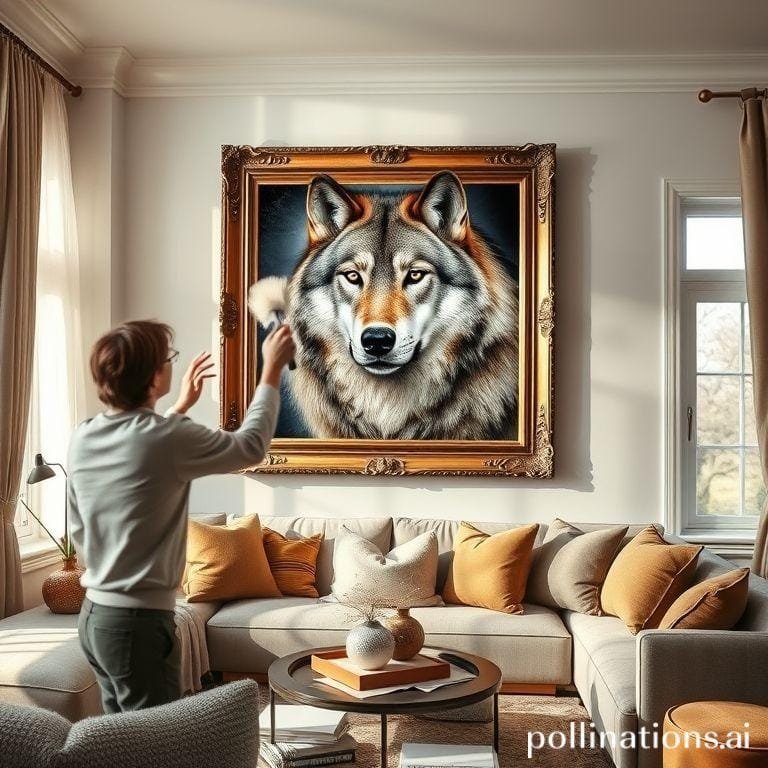Your cart is currently empty!
Essential Wall Art Care Tips for Lasting Beauty

Think of your wall art like a garden in your home. It’s not just something pretty to look at—it’s an investment in the feeling of your space and a way to show your personal taste. Whether it’s a special family photo, a rare print, or a beautiful piece from Paw Creativ, taking good care of it is key to keeping its colors bright and making sure it lasts for many years. Over time, sunlight, dust, and moisture can act like slow weather, causing colors to wash out and materials to break down. But with a few simple habits, you can guard your artwork and keep it looking as fresh as the day you put it up.
This guide will walk you through the basic steps of caring for wall art, from regular cleaning to smart placement. We’ll talk about how to handle different kinds of prints, the best ways to frame and hang your pieces, and common errors to skip. By the end, you’ll know how to protect your collection so your favorite art stays a centerpiece in your home.
Getting to Know What Your Art Is Made Of
The first step in good care is knowing what your art is made from. Different materials need different handling. Most modern art prints, like the high-quality giclée prints from Paw Creativ, are made on acid-free paper or canvas using special inks that resist fading. This means they’re built to stay bright for decades if you treat them right. But even the best materials need shelter from things like sun and dampness.
Paper prints are sensitive to water and can be harmed by touch. Canvas prints are tougher but can gather dust in their texture or get scratched. Knowing if your piece is behind glass, has a coating, or is open to the air will change how you clean it. Always check the details that came with your art or ask the artist or store for care tips made for your specific print.
Cleaning Your Wall Art the Safe Way
Dust and dirt are the everyday foes of wall art. Regular, gentle cleaning is important, but you have to do it carefully to avoid harm. For prints under glass or acrylic, use a soft, lint-free cloth to wipe the surface. You can slightly dampen the cloth with distilled water, but never spray liquid right onto the glass, since it can leak behind and hurt the print.
For prints without protection or canvas art, dusting needs a lighter touch. Use a soft, clean brush—like one for camera lenses or a wide paintbrush—to gently sweep dust away. Start at the top and use soft strokes. Skip feather dusters, as they can catch on canvas or scratch surfaces. For tough spots on canvas, you can use a barely damp cloth with great care, but test a hidden spot first.
Framing and Hanging to Protect Your Art
A good frame is like a shield for your art—it doesn’t just make it look better; it guards it. When framing, always use a mat or spacer to keep the art from touching the glass. Over time, moisture can build up, and if the print presses on the glass, the ink might smear or the paper could stick, causing damage you can’t undo. Using acid-free mats and backing boards also helps stop yellowing and decay from inside the frame.
For canvas prints, stretching them over a wooden frame lets the material breathe and avoids bending. If you frame canvas, leave a small space between the canvas and the glass. When hanging your art, pick a spot away from direct heat like radiators or fireplaces, since big temperature changes can make materials swell and shrink, leading to cracks or warping over time.
Guarding Art from Sun and Moisture
Sunlight is the main reason art prints fade. Even indirect sun can cause damage over months and years. Your best defense is to hang art where direct sun never hits it. If your room has lots of natural light, think about using UV-filtering glass or acrylic when framing. This special covering blocks almost all harmful UV rays, slowing fading a great deal.
Humidity is another quiet threat. High moisture can lead to mold and make paper warp, while very dry air can make materials brittle. Try to keep your art in a place with steady humidity, ideally between 40% and 50%. Don’t hang valuable pieces in bathrooms, kitchens, or basements where humidity changes a lot. If you live somewhere humid, a dehumidifier can help protect your whole collection.
Handling and Storing Your Art Correctly
Sometimes you’ll need to take down your art—for moving, redecorating, or storage. Handling it right is crucial. Always hold framed art by the frame, not by the wire or hanger. For unframed prints, hold them by the edges and think about wearing cotton gloves to keep skin oils off the surface.
If you need to store art, never put it in a regular cardboard box in an attic or garage. Extreme temperatures and pests can ruin it. Instead, store art flat and upright in an acid-free portfolio or a strong plastic bin in a room with stable temperature. Put acid-free paper between prints to keep them from sticking. For framed pieces, wrap them in bubble wrap or blankets and store them standing up, never lying down with weight on top.
When to Call a Professional
While you can handle everyday care, some problems need expert help. If your art has serious damage—like a tear, water stain, or heavy fading—don’t try to fix it yourself with tape or home cleaners. DIY repairs often make things worse. Instead, find a professional art conservator or a good framing shop that does restoration work.
Signs you need a pro include: mold spots, paper that’s warped, major color changes, or damage to the frame. A professional can check the damage and use safe materials and methods to repair the piece, saving its value and look for the future.
Caring for your wall art is a way of preserving the beauty it adds to your home. By knowing the materials, cleaning gently, framing wisely, and protecting pieces from hazards, you can make them last much longer. Each piece, especially those that capture the unique spirit of animals from Paw Creativ, tells a story and brings life to your space. A little regular care keeps these stories clear and colorful for years to come. Remember, the aim isn’t just to have beautiful art—it’s to keep it beautiful, so you can enjoy the joy and connection it gives every day.
